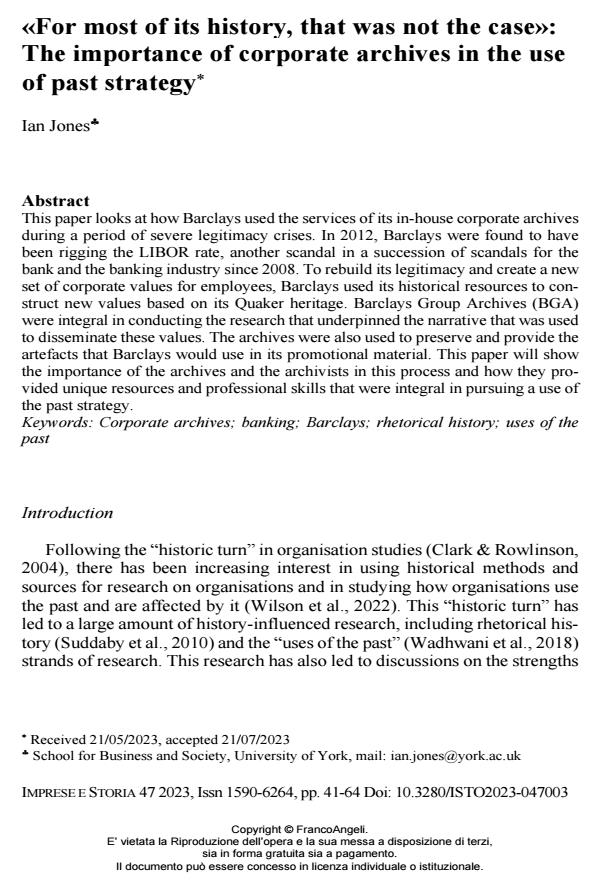«For most of its history, that was not the case»: The importance of corporate archives in the use of past strategy
Titolo Rivista IMPRESE E STORIA
Autori/Curatori Ian Jones
Anno di pubblicazione 2024 Fascicolo 2023/47
Lingua Inglese Numero pagine 24 P. 41-64 Dimensione file 229 KB
DOI 10.3280/ISTO2023-047003
Il DOI è il codice a barre della proprietà intellettuale: per saperne di più
clicca qui
Qui sotto puoi vedere in anteprima la prima pagina di questo articolo.
Se questo articolo ti interessa, lo puoi acquistare (e scaricare in formato pdf) seguendo le facili indicazioni per acquistare il download credit. Acquista Download Credits per scaricare questo Articolo in formato PDF

FrancoAngeli è membro della Publishers International Linking Association, Inc (PILA)associazione indipendente e non profit per facilitare (attraverso i servizi tecnologici implementati da CrossRef.org) l’accesso degli studiosi ai contenuti digitali nelle pubblicazioni professionali e scientifiche
This paper looks at how Barclays used the services of its in-house corporate archives during a period of severe legitimacy crises. In 2012, Barclays were found to have been rigging the LIBOR rate, another scandal in a succession of scandals for the bank and the banking industry since 2008. To rebuild its legitimacy and create a new set of corporate values for employees, Barclays used its historical resources to con- struct new values based on its Quaker heritage. Barclays Group Archives (BGA) were integral in conducting the research that underpinned the narrative that was used to disseminate these values. The archives were also used to preserve and provide the artefacts that Barclays would use in its promotional material. This paper will show the importance of the archives and the archivists in this process and how they pro- vided unique resources and professional skills that were integral in pursuing a use of the past strategy.
Parole chiave:Corporate archives; banking; Barclays; rhetorical history; uses of the past
- Board composition in the ‘Big Four’ British clearing banks, 1970-2005: A prosopographic and theoretical analysis Ian G. Jones, John F. Wilson, Anna Tilba, Mitchell J. Larson, in Business History /2025 pp.1
DOI: 10.1080/00076791.2025.2550738
Ian Jones, «For most of its history, that was not the case»: The importance of corporate archives in the use of past strategy in "IMPRESE E STORIA" 47/2023, pp 41-64, DOI: 10.3280/ISTO2023-047003